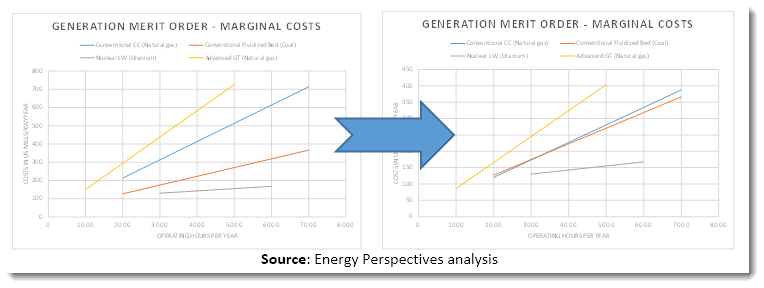The incredible has happened – again. The fall in NBP gas prices by about 50% from over 70 p/th this past winter has made natural gas attractive for power generation in the UK. The change is particularly impressive given the continued low CO2 emission permit costs of 6 €/t.

While coal prices have weakened slightly as a result, policy and economics play together to potentially boost UK natural gas demand by over 10 BCM/year. With the EU LCPD, “Large Cumbustion Plant Directive” additionally forcing the closure of nearly 8 GW of UK coal capacity by 2015 anyway, the changes have important structural implications also.
The main reason for the price drop has been a dramatic return of LNG from Qatar to the UK market. July LNG imports have been the highest since the LNG tide started in late February, running at over 50 mcm/day. We now know the complex Asian drivers and Qatari strategies behind the resurgence. These spot volumes may now be combined with LNG volumes under renewed import contracts with, i.a. Centrica and Petronas.
Qatar certainly has free export capacity available at this time. The Asian LNG supply/demand balance, particularly in South Korea, will be a key in assessing the continued flow of surplus LNG into Europe. Qatar may also find its short term objectives and strategies realized.
The effect is that traders are now effectively trading in semi-darkness. Statistically driven portfolio risk management is on thin ice, forcing trading to much shorter horizons. Mirroring this, Transco’s Prevailing View website is now having serious performance problems. One concern is that the LNG flow into the UK may stop as a quickly as it surged. (We provide our iGIS/LNG business intelligence solution for early warning and detailed understanding of developments.)
In the global context, the European LNG summer has, on top of LNG project cost increases, caused major changes to corporate priorities and thinking. For example, Apache is effectively pulling out of LNG and Woodside restructures. The delivered “future” price of US LNG exports to Europe (by our contractually based analysis) is now 1.00-2.50 USD/MMBtu higher than the UK SAP price. The general softening of Asian LNG prices may therefore severely threaten project economics and progress for US and Canadian projects that have not reached final investment decision.
We once again see confirmed the need for commercial flexibility, and the need to look across business and price cycles. Given the relative stability of energy prices over the last three years, the signals are that we have entered a phase of much larger volatility. A key lesson from 2014 thus far, is that relatively small changes – such as 10 BCM/year of LNG to Europe on top of a mild winter – can trigger very large price effects. This is the nature of the Butterfly Effect. This time the butterfly may survive the winter also.